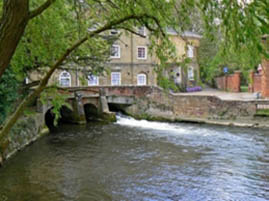 After some continued dialogue with the Agency, we have finally seen the reforms being forced on abstractors along the Wensum Valley.
After some continued dialogue with the Agency, we have finally seen the reforms being forced on abstractors along the Wensum Valley.
The process overseen by Natural England, protecting the health of the SSSI/SAC designated river is broken into 3 sections. Source to Fakenham (AP5), Fakenham to Swanton Morley (AP7), Swanton Morley to Hellesdon Mill (AP8).
The overall process is based on actual historic flows against time in percentage terms. This is presented using a graph know as a flow duration curve.
In terms of what this means at the 3 locations, at an assessment point of Q95 (More than 5% of the time, which is the legal target for the Agency to manage abstraction impact on flow known as Q95)
AP5 has a flow deficit of 2.6Ml/Day for around 95 days per year Q74
AP5 has a flow deficit of 1.5Ml/Day to be recovered to meet Q95 and then exceed this 18 days per year
AP7 has a flow deficit of 2.1Ml/Day for around 2 days per year Q99.5
AP7 has a flow surplus of 2.6Ml/Day for 348 days per year Q95
AP8 has an average flow deficit of 29.7Ml/Day for around 193 days per year Q47
AP8 has a flow deficit of 48Ml/Day to be recovered to meet Q95 and then exceed this 18 days per year
AP5 Is seeking to place changes on time limited licenced abstraction in this area.
AP8 is forcing Anglian Water to move their Public Water abstraction point from Costessy to downstream of the SAC area to the Heigham works and a significant infrastructure investment.
48Ml/Day represents about 13% capacity of a normal size 25m swimming pool. However this still means that downstream of this Heigham extraction, there remains low flows.
What does this mean then, the river downstream of Costessey to Heigham will now go back to the previous flow regime, in the once famous areas such as Ketteringhams and Costessey.
We will still need to understand the impact and residual freshwater flow as the river becomes tidal above New Mills. Is this allowing more saline incursion up the river, a question many are asking.
The Agency has also issued a briefing on this.



